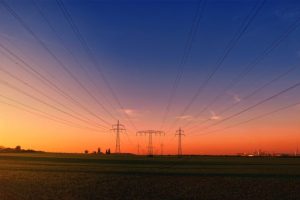Seaports in Africa are the lifelines of global trade on the continent. They are hubs that connect producers, suppliers and consumers on the continent and beyond. These ports facilitate the movement of commodities, manufactured goods and raw materials to enhance global trade.
According to the African Union, more than 90 per cent of Africa’s imports and exports are transported by sea, making the continent a strategic gateway to global trade. Although it is expected that every country should have a seaport, however, there are seaports in Africa that rank higher than others on the continent. It is no longer news that Africa is blessed with rich natural resources which countries export to foster economic growth.
Therefore, this article ranks the top 10 seaports in Africa based on their Container Port Performance Index (CPPI).
Top 10 busiest seaports in Africa
10. Tema Port
Tema Port is the largest port in Ghana. It is located in the industrial city of Tema, on the eastern coast of the country, with over 3.9 million square metres of land area. According to its official website, the port receives an average of over 1,511 vessel calls per year. These calls comprise container vessels, general cargo vessels, tankers, Ro-Ro and cruise vessels, amongst others.
Tema Port added a new terminal that accommodates vessels of up to 22,000 Twenty-foot Equivalent Units (TEUs) from a previous 5,000 TEUs. Hence, the new terminal increased Ghana’s container-handling capacity to around 3.7 million TEUs a year, from 800,000 TEUs.
9. Port of Doraleh
The Port of Doraleh is a multipurpose port located in Djibouti. It is an extension of the Port of Djibouti, located five kilometres west of Djibouti City. With a capacity of 1.6 million containers annually, this port serves as a link to Europe, the Far East, the Horn of Africa and the Persian Gulf.
In 2020, the World Bank and IHS Markit’s latest global Container Port Performance Index recognised Djibouti as the top container port in Africa and 61st globally on efficiency. A new railway has been constructed to link the port with landlocked Ethiopia.
8. Mombasa Port
The Mombasa is one of Africa’s oldest surviving harbours. Its history can be traced back to before the arrival of the Portuguese explorers and then, when Arabian dhows called at the Old Port on the north side of Mombasa Island.
Located in Mombasa, Kenya in East Africa, the Mombasa Port has a handling capacity of 1.65 million containers. Some of these containers include grain, fertilisers, cement and soda ash and liquid bulk, such as crude oil and oil products. In addition, there are bagged products (coffee, tea, sugar, etc), general break-bulk (iron and steel, timber), motor vehicles and machinery.
The Port of Mombasa has a total of 19 deepwater berths, six of which are for container ships. Others include tanker berths, bulk and breakbulk cargo berths.
7. Port of Casablanca
The Port of Casablanca is one of the largest artificial ports in the world. Located near the Hassan II Mosque in Casablanca, Morocco, the port had an initial capacity of 3.5 million shipment containers. Now, it can handle 21.3 million tons of cargo annually.
With an extent of 605 hectares and more than eight kilometres in length, this port can accommodate and treat more than 35 ships at the same time. Meanwhile, the Port of Casablanca is managed by Marsa Maroc, the successor of ODEP (Office D’Exploitation des Ports), a publicly owned establishment.
6. Port of Abidjan
The Autonomous Port of Abidjan (Port Autonome, d’Abidjan) is a commercial port located at Treichville, in the southern area of Abidjan, Cote d’Ivoire’s capital. Established in 1951, this port has been rated the most important port in West Africa and the second most important in Africa after the Port of Durban.
The Port of Abidjan is the major contributor to the economy of Cote d’Ivoire. It also serves as a link to landlocked countries in West Africa such as Burkina Faso, Mali, Niger, Chad and Guinea. In 2022, a second container terminal was established. Therefore, the port has a total container handling capacity of 2.5 million TEUs. Major companies operating there include SDV-SAGA (which employs over 4,000 people), SETV Terminal Operating Company Vridi, Sitarail and SIMAT.
5. Port of Ngqura
The Port of Ngqura is a deepwater port on the east coast of South Africa. The port was authorised by an act of parliament in 2002 and became operational in October 2009. Hence, the Port of Ngqura is South Africa’s newest seaport and the deepest container port in the country. It also has a handling capacity of about two million TEUs.
4. Lekki Deep Sea Port
Lekki Deep Sea Port is a multi-purpose, deep sea port in the Lagos Free Zone in Nigeria. It is also the only port in the country, after becoming fully operational in April 2023.
In other words, this is the largest seaport in Nigeria and one of the biggest in Africa. It was financed by private investors and a consortium of banks, who have funded the project with $1.5 billion, as of March 2021. The port also occupies 90 hectares of land. It can handle 2.7 million, 20-foot TEUs and is also designed to handle vessels, with a capacity exceeding 18,000 TEUs.
3. Port of Durban
The Port of Durban, popularly known as Durban Harbour, is the largest and busiest shipping terminal in sub-Saharan Africa. It has a container-handling capacity of 2.9 million TEUs and the capacity to handle over 600,000 shipped vehicle units. Over 5,000 ships dock at the port every year, generating around 60 per cent of trade revenue for South Africa.
However, the Port of Durban is suffering from huge efficiency challenges. Therefore, a contract to upgrade and manage the container port was recently signed with Philippines-based International Container Terminal Services Inc.
2. Port Said
Port Said was the world’s largest coal-bunkering station in the late 19th century. Now, it is the busiest port in Egypt. Located in northeast Egypt, it is an important harbour for exports of Egyptian products like cotton and rice. It also serves as a fueling station for ships that pass through the Suez Canal.
Port Said has a handling capacity of about five million tonnes of 20-feet containers annually. It thrives on being a duty-free port and a tourist resort, especially during summer. Due to its strategic location, is designed to attract logistics start-ups along with import and export businesses. As a result, Port Said is globally ranked 15th on performance based on port calls and vessels.
1. Tanger Med
Tanger Med port is an industrial port complex located 45 kilometres northeast of Tangier, Morocco. It is Morocco’s and Africa’s biggest and busiest port. With an annual handling capacity of nine million 20-foot containers (TEUs), this port can also handle exports of one million new vehicles and transit seven million passengers and 700,000 trucks annually.
According to the World Bank and Standard and Poor’s Global Market Intelligence, Tanger Med is ranked sixth globally in terms of port efficiency, with infrastructure and also outperforming all African and European ports.




